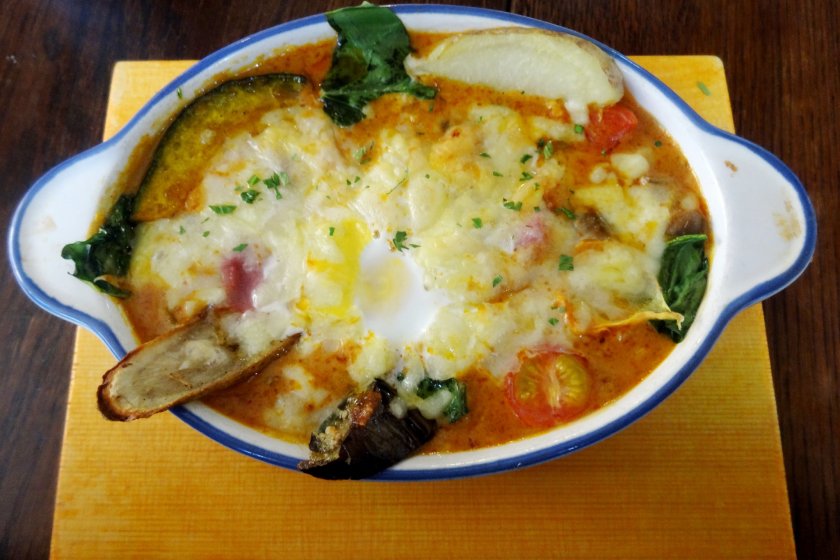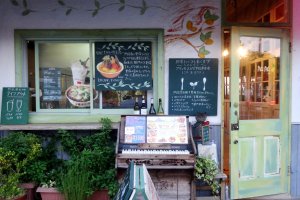Japanese diners love their curry dishes, but the town of Kitakyushu takes it one step further with a baked curry meal that has made the city famous. While you have over 40 choices of restaurants in Kitakyushu offering yaki-curry, you can't go wrong with the award-winning recipe at Princess Phi Phi in the Moji Port area.
Princess Phi Phi sits along the waterfront, a short block from the central square of the refurbished port. The restaurant can be initially confusing, as it offers diners the option of eating in a basement dining room or in a small cafe on the first floor. Next door to the cafe, a store of the same name sells clothing, jewelry and other goods.
The name Phi Phi might give it away for some, but the restaurant has a distinct Thai focus on its menu. Spicy starter salads and spring rolls - featuring plump shrimp and fresh cilantro - accompany many meals but can also be ordered a la carte. Many of the dishes feature coconut milk, which is imported from Thailand. Curry is obviously the main menu selection, with various seafood and meat toppings. But it's the "regular" yaki-curry that stands out. Yaki-curry was first created in the 1950s in the Moji neighborhood when a local chef combined curry and rice, topped it with generous amounts of cheese and baked it all in an oven. The dish is finished off with a raw egg mixed into the curry. At Princess Phi Phi, the yaki-curry is also baked with at least a half dozen vegetables, ranging from potatoes and Japanese pumpkin to broccoli and fresh tomatoes. It's all topped with a few basil leaves.
If you're not accustomed to spicy food, be warned. While regular curry joints like Coco Ichiban have varying levels of spiciness, Princess Phi Phi's curry is not customizable. So either fill up on the free water or tea or order the child-friendly mild curry on the menu.
Most of the seats in Princess Phi Phi's cafe section face the port, perfectly positioned to catch the sunset. The restaurant is also a very short walk from the restored section of the main port, where Meiji and Taisho era buildings have gotten a gleaming facelift. Top off your curry dinner with one of the port's banana-based desserts, as Moji's shipping culture made it a big importer of bananas from Southeast Asia.

































